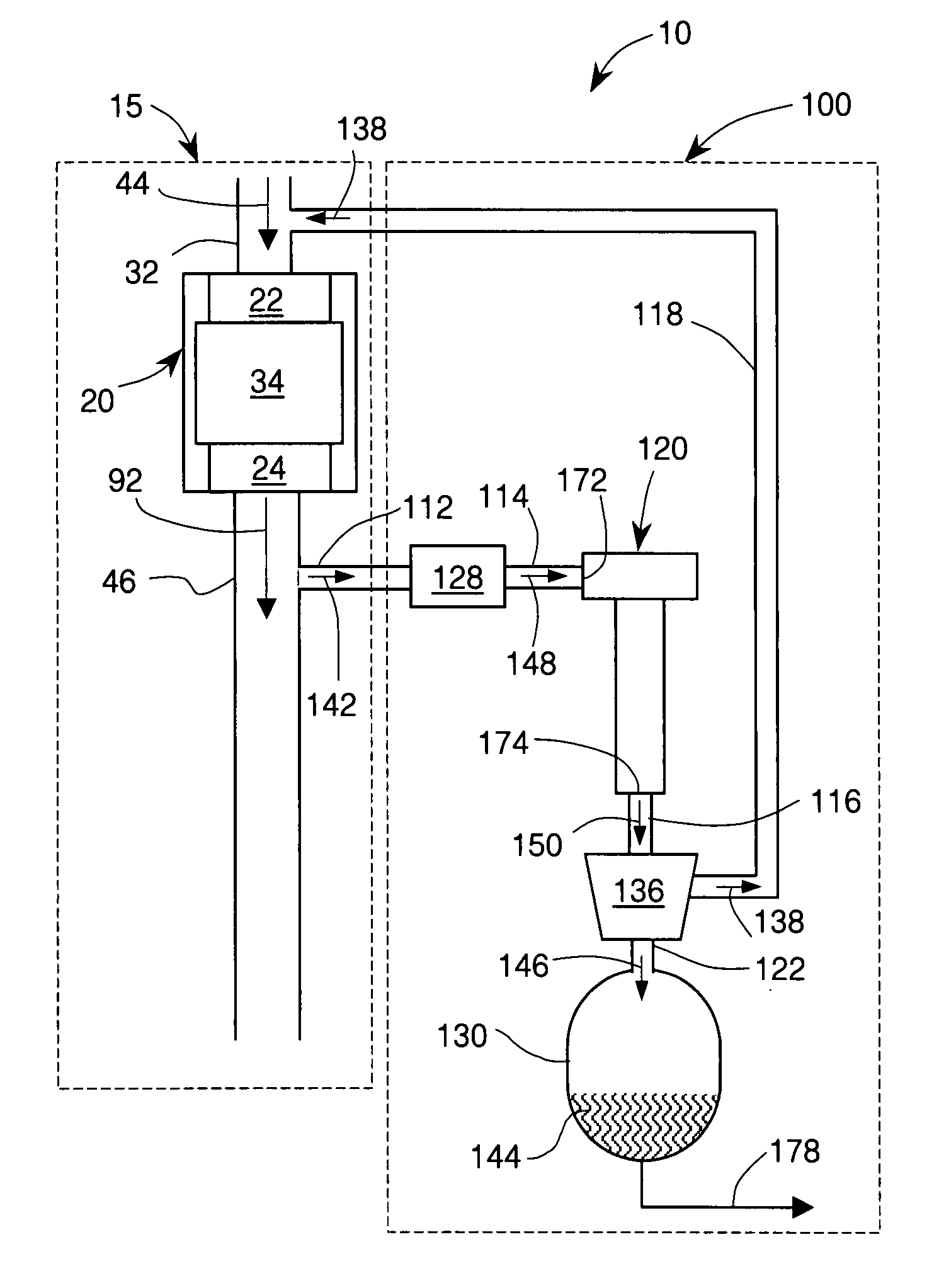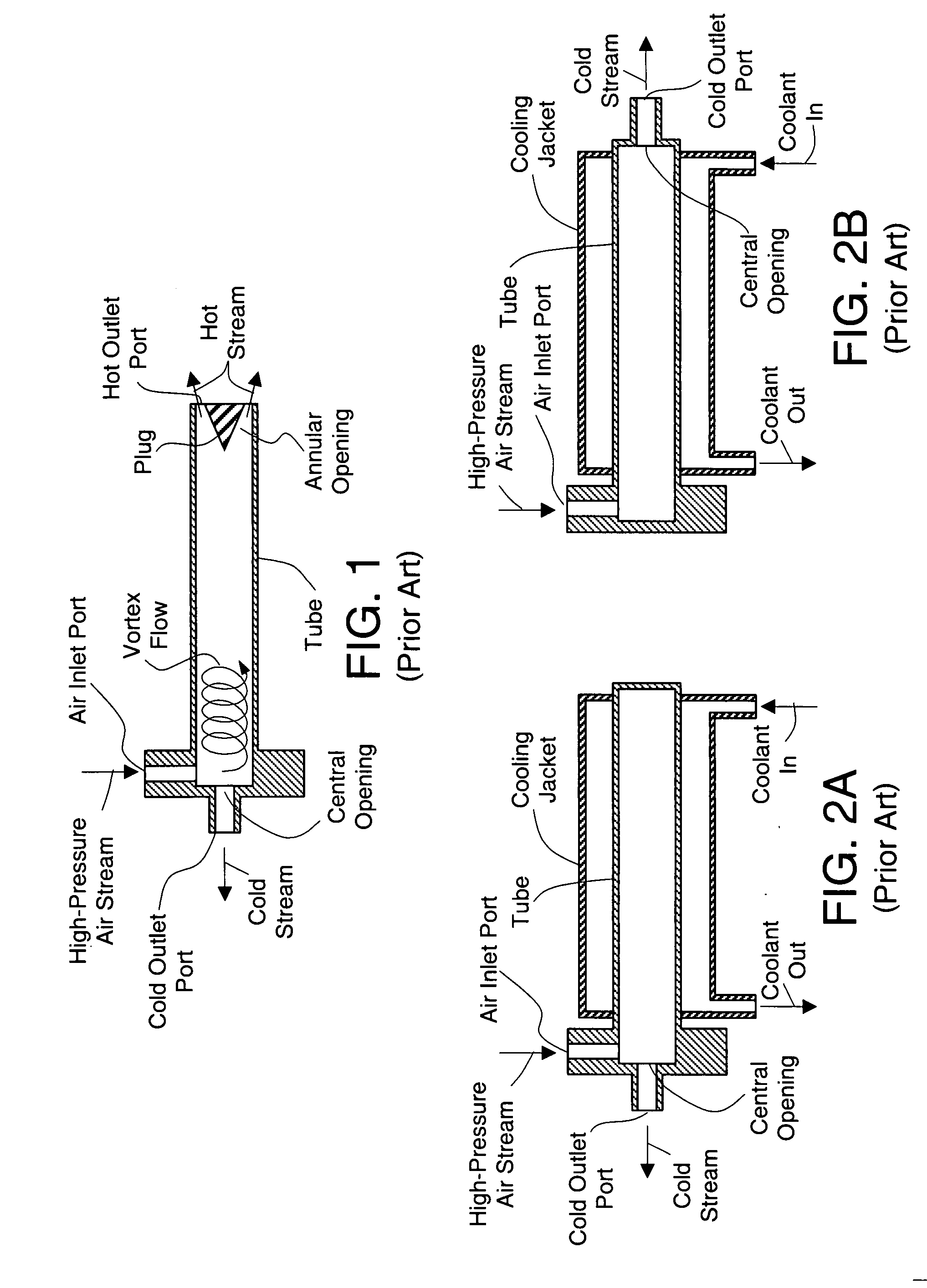Internal combustion engine/water source system
a technology of water source system and internal combustion engine, which is applied in the direction of machines/engines, mechanical equipment, non-fuel substance addition to fuel, etc., can solve the problems of delayed engine availability during and immediately after engine operation, excessive mechanical wear, and poor engine performance, so as to improve operation and reduce pollutants
- Summary
- Abstract
- Description
- Claims
- Application Information
AI Technical Summary
Benefits of technology
Problems solved by technology
Method used
Image
Examples
example 2
[0041] Consider a hypothetical ICE / water source system 10 operated at a sea level with ambient atmospheric pressure of 760 Torr and at an ambient temperature of 40 degrees Centigrade (104 degrees Fahrenheit). To limit ICE pumping loss, ICE designers normally strive to keep the pressure drop in the exhaust duct 46 very small. This means that the pressure inside the exhaust duct 46 may be only slightly higher than the ambient atmospheric pressure. It may be assumed that the pressure in the exhaust duct at a point where it connects to line 112 is about 850 Torr. It may be also assumed that the pressure inside the intake duct is about 600 Torr or lower. Assuming that the exhaust gas stream 92 has a 850 Torr total pressure and it contains 16% water vapor by volume, the partial pressure of the water vapor therein is about 136 Torr which translates to a dew point of about 58 degrees Centigrade. Consider a process stream 142 being drawn from exhaust gas stream 92 and cooled in the heat exch...
PUM
 Login to View More
Login to View More Abstract
Description
Claims
Application Information
 Login to View More
Login to View More - R&D
- Intellectual Property
- Life Sciences
- Materials
- Tech Scout
- Unparalleled Data Quality
- Higher Quality Content
- 60% Fewer Hallucinations
Browse by: Latest US Patents, China's latest patents, Technical Efficacy Thesaurus, Application Domain, Technology Topic, Popular Technical Reports.
© 2025 PatSnap. All rights reserved.Legal|Privacy policy|Modern Slavery Act Transparency Statement|Sitemap|About US| Contact US: help@patsnap.com



